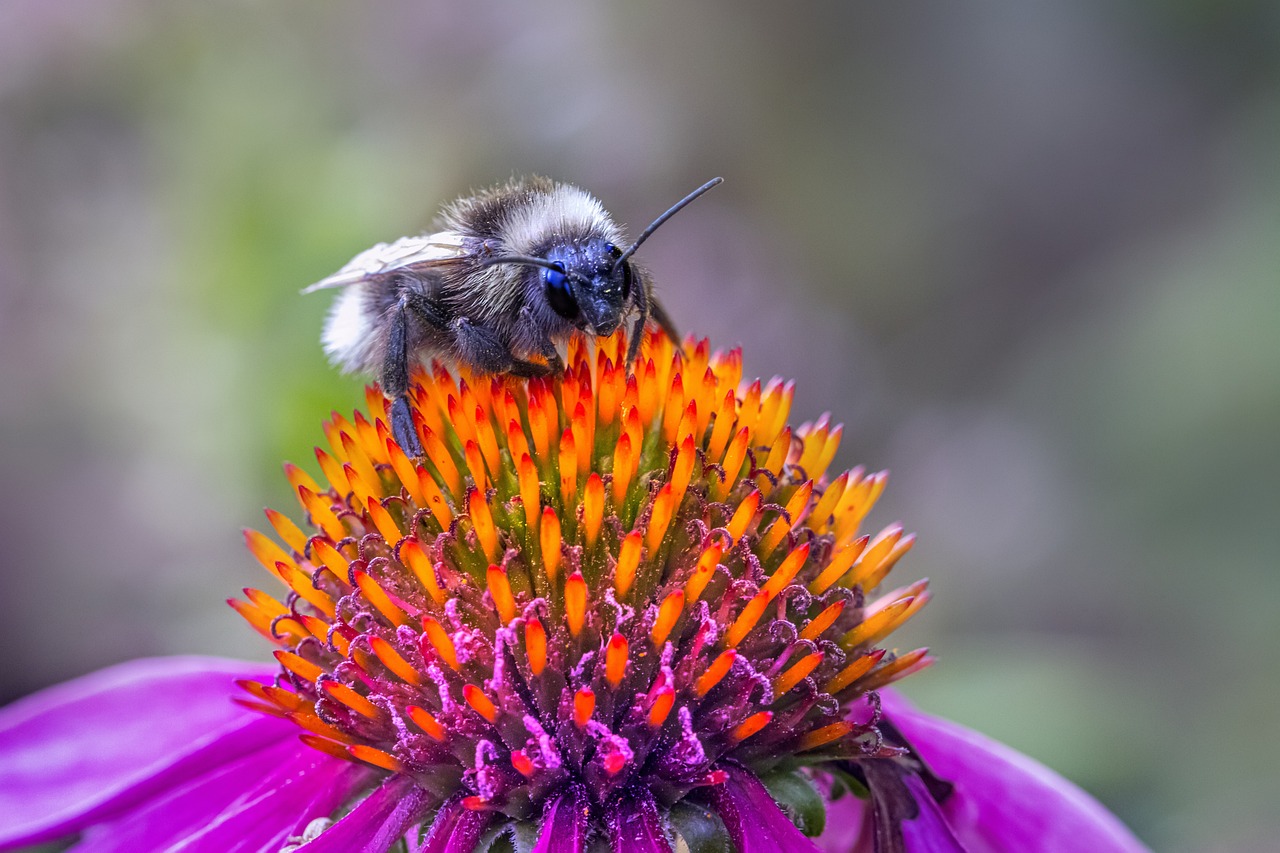The White-tailed Bumblebee (Bombus lucorum) is a common and widespread species of bumblebee notable for its distinctive white tail and important ecological role as a pollinator.
Description
- Appearance:
- Size: Workers are typically 11-17 mm in length, queens are larger at 20-22 mm, and males (drones) range from 14-16 mm.
- Coloration: This bumblebee is characterized by its bright yellow and black bands and a distinctive white tail. The thorax has a yellow band at the front, while the abdomen has another yellow band in the middle.
- Fur: Dense and fluffy fur aids in trapping pollen and provides insulation.
Habitat
- Distribution: The White-tailed Bumblebee is found throughout Europe, including the British Isles, Scandinavia, and parts of Asia.
- Preferred Environment: It thrives in diverse habitats such as gardens, meadows, farmland, woodland edges, and urban areas.
Behavior and Ecology
- Diet:
- Nectar: Adult bumblebees feed on nectar for energy.
- Pollen: Collected pollen is used to feed the larvae.
- Pollination: Bombus lucorum is a crucial pollinator for many wildflowers and crops, contributing to biodiversity and agriculture.
- Nesting:
- Location: Nests are often found underground, such as in abandoned rodent burrows, but can also be in dense grass or leaf litter.
- Structure: Nests house a colony that typically consists of a single queen, workers, and males.
- Life Cycle:
- Queens: Queens emerge from hibernation in early spring to establish new colonies.
- Workers: Workers are produced throughout the spring and summer to gather food and care for the growing colony.
- Males and New Queens: Towards the end of summer, the colony produces males and new queens, which will mate. The new queens then hibernate, while the rest of the colony dies off.
Conservation
- Status: While not currently considered threatened, the White-tailed Bumblebee faces pressures from habitat loss, pesticide use, and climate change.
- Conservation Efforts: Efforts focus on habitat preservation, planting pollinator-friendly flowers, and reducing pesticide use to support healthy populations.
Observing White-tailed Bumblebees
- Best Times: They are most active from early spring through late summer.
- Watching Tips: Look for them in gardens and meadows, especially near flowering plants. Their distinctive white tail makes them easy to identify.
Interesting Facts
- Pollination Role: They are vital pollinators for crops like tomatoes, strawberries, and various wildflowers.
- Behavior: They exhibit a behavior called “buzz pollination,” where they vibrate their bodies to release pollen from flowers.
- Social Structure: Like other bumblebees, they live in colonies with a defined social structure, including a queen, workers, and drones.
Summary
The White-tailed Bumblebee (Bombus lucorum) is a key pollinator found across Europe and parts of Asia. Recognizable by its white tail and yellow-black banding, this species plays an essential role in pollination and biodiversity. Despite being common, it faces environmental pressures that require ongoing conservation efforts to ensure its continued presence in natural and agricultural landscapes.ral ecosystems.
Visited 9 times, 9 visit(s) today
Views: 29
Subscribe to the newsletter:
